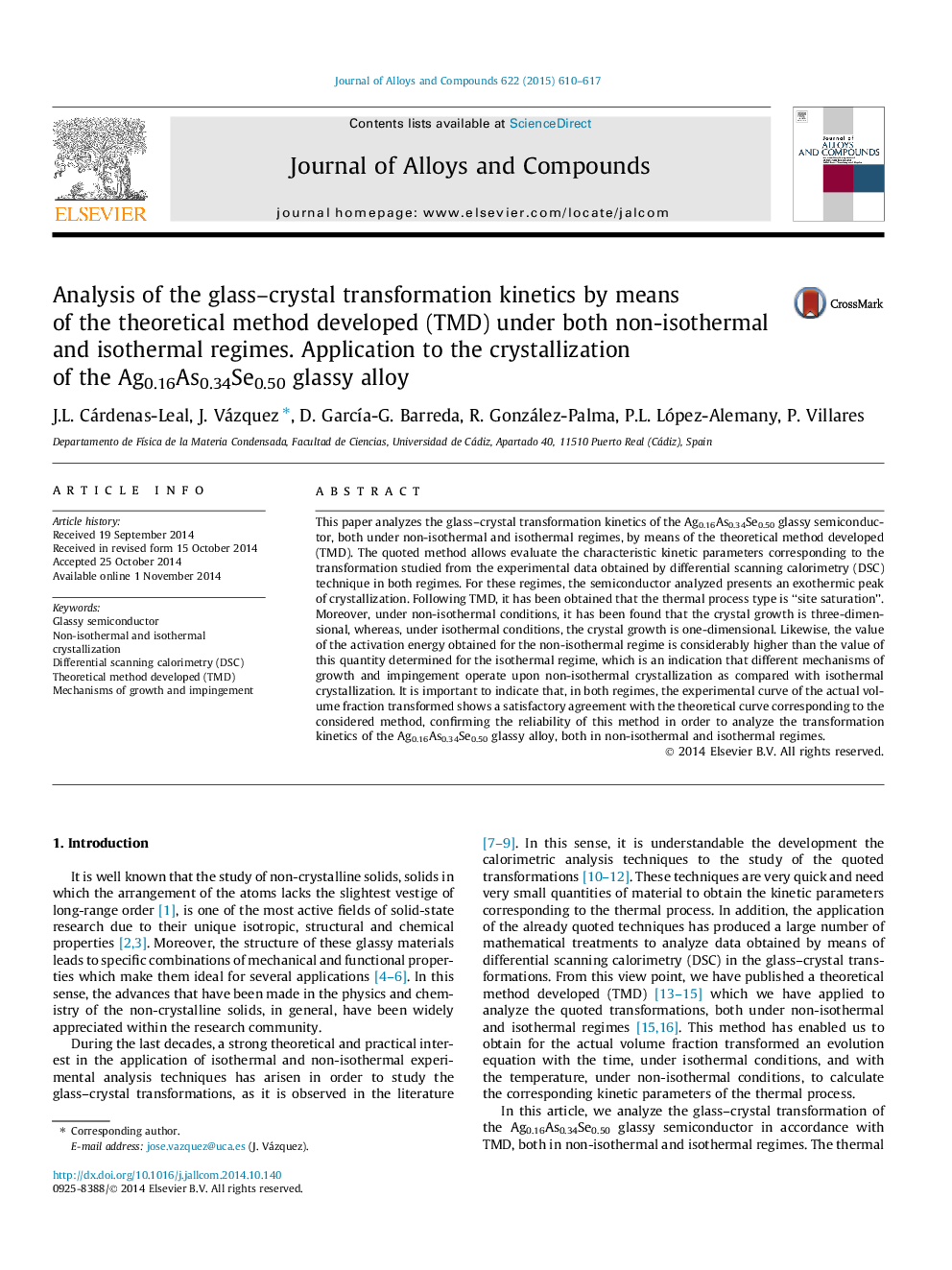| Article ID | Journal | Published Year | Pages | File Type |
|---|---|---|---|---|
| 1609940 | Journal of Alloys and Compounds | 2015 | 8 Pages |
Abstract
This paper analyzes the glass-crystal transformation kinetics of the Ag0.16As0.34Se0.50 glassy semiconductor, both under non-isothermal and isothermal regimes, by means of the theoretical method developed (TMD). The quoted method allows evaluate the characteristic kinetic parameters corresponding to the transformation studied from the experimental data obtained by differential scanning calorimetry (DSC) technique in both regimes. For these regimes, the semiconductor analyzed presents an exothermic peak of crystallization. Following TMD, it has been obtained that the thermal process type is “site saturation”. Moreover, under non-isothermal conditions, it has been found that the crystal growth is three-dimensional, whereas, under isothermal conditions, the crystal growth is one-dimensional. Likewise, the value of the activation energy obtained for the non-isothermal regime is considerably higher than the value of this quantity determined for the isothermal regime, which is an indication that different mechanisms of growth and impingement operate upon non-isothermal crystallization as compared with isothermal crystallization. It is important to indicate that, in both regimes, the experimental curve of the actual volume fraction transformed shows a satisfactory agreement with the theoretical curve corresponding to the considered method, confirming the reliability of this method in order to analyze the transformation kinetics of the Ag0.16As0.34Se0.50 glassy alloy, both in non-isothermal and isothermal regimes.
Related Topics
Physical Sciences and Engineering
Materials Science
Metals and Alloys
Authors
J.L. Cárdenas-Leal, J. Vázquez, D. GarcÃa-G. Barreda, R. González-Palma, P.L. López-Alemany, P. Villares,
